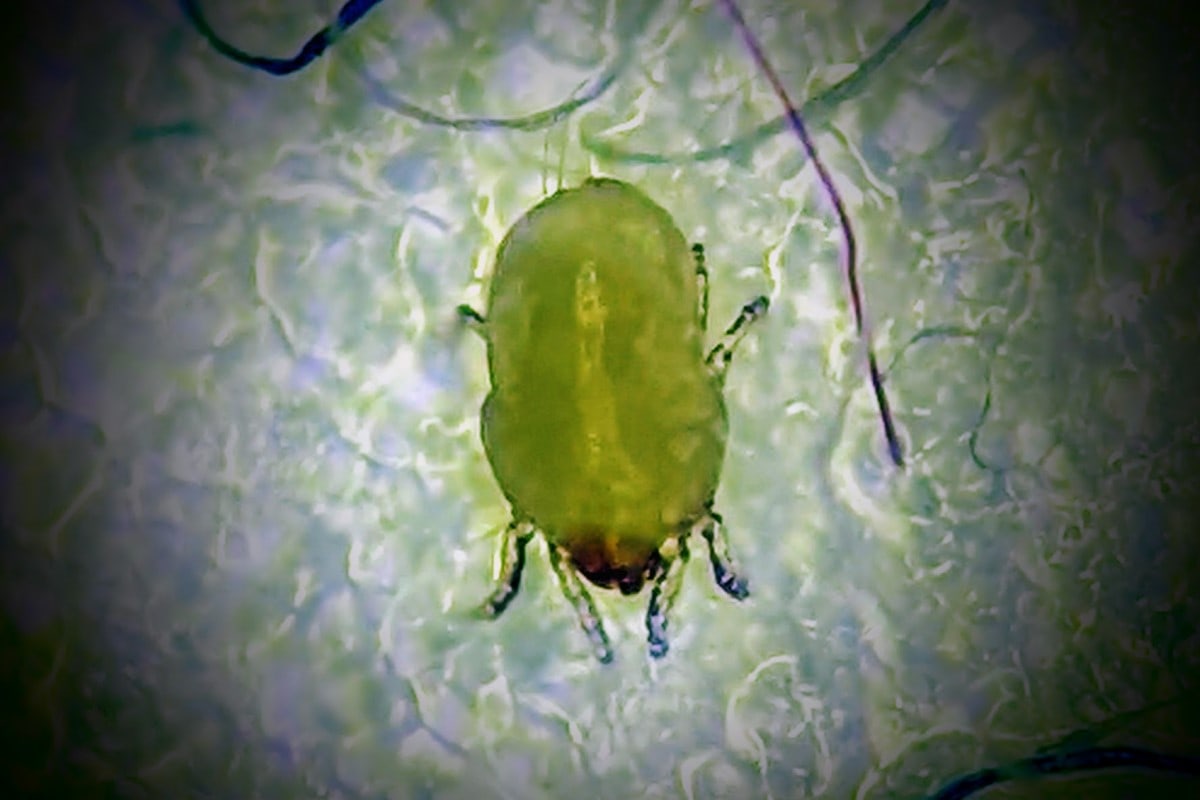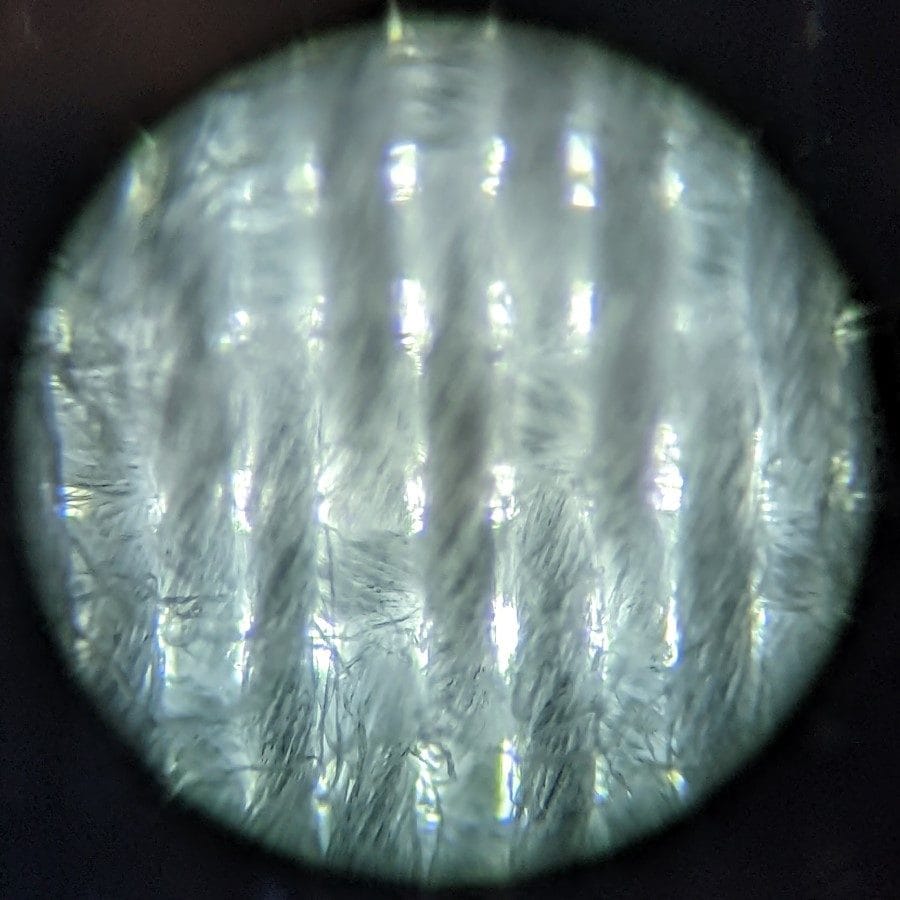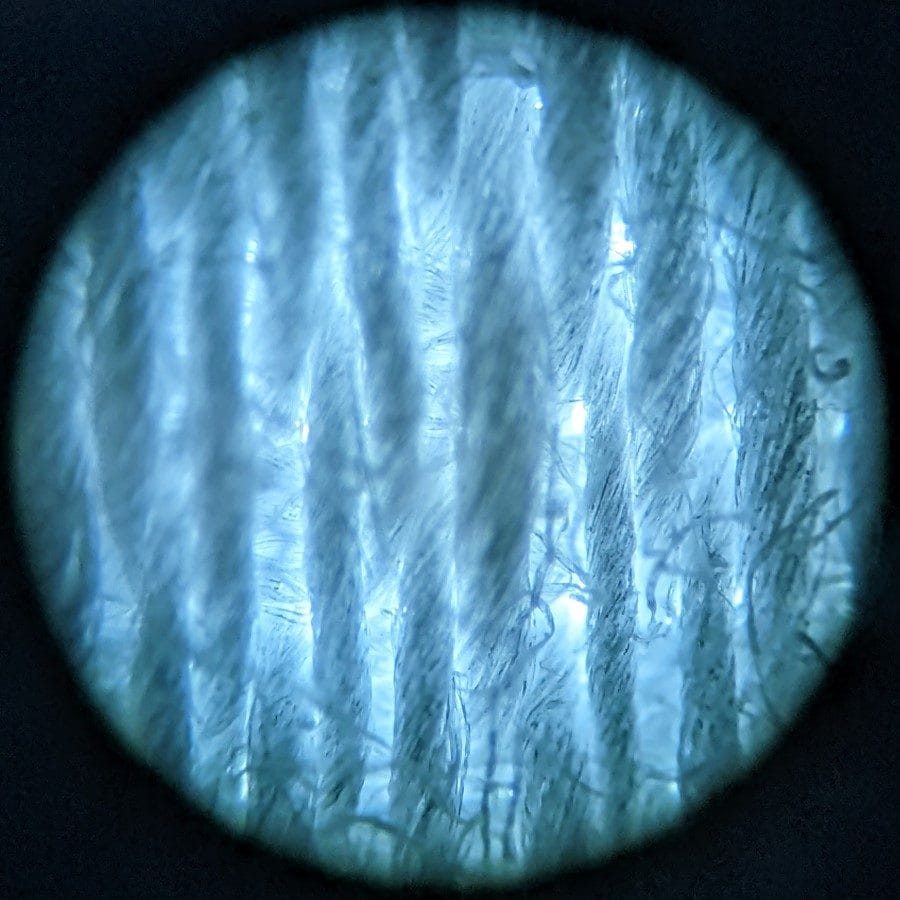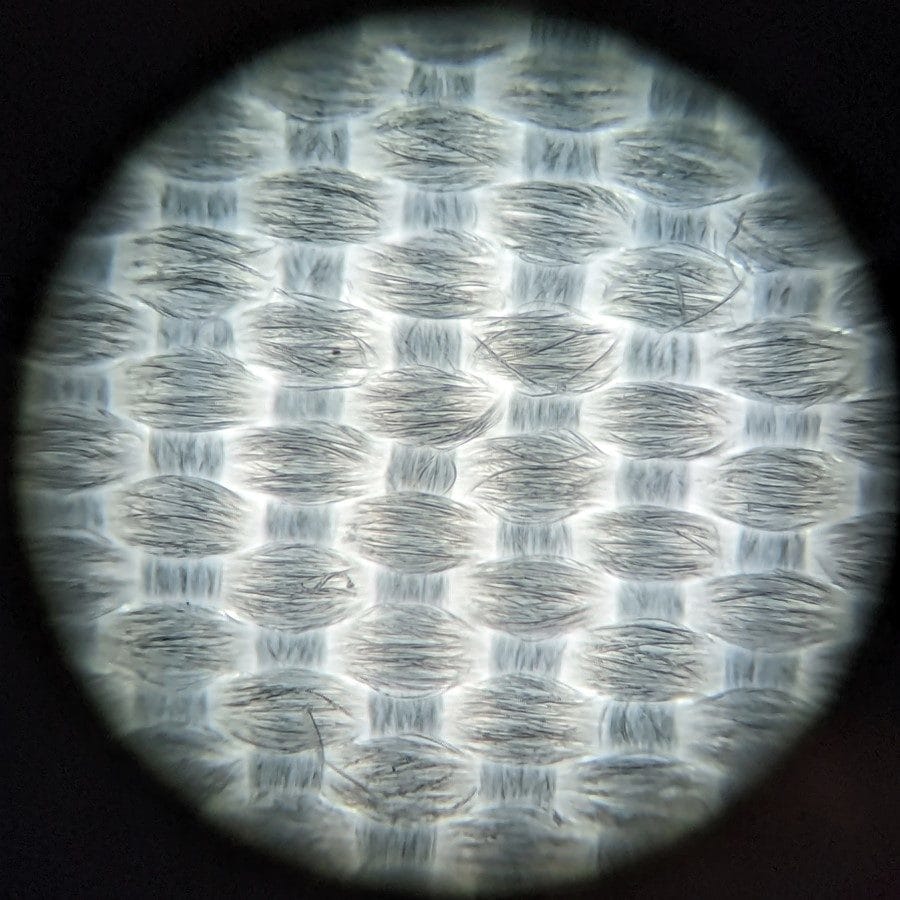Maybe you are someone like me, who has been formally diagnosed with dust allergies by a doctor. Or perhaps, you suspect that you have allergies to dust but are not quite sure. Either way, in this article, you will learn a great deal about dust allergies and how best to avoid them. But first,
What are dust allergies?
Dust allergies are often misunderstood because the word “dust” is a general term to describe any fine powdery substance that easily becomes airborne. Furthermore, in our daily lives, most people encounter more dust outdoors than indoors.
Consequently, it is common for some people to mistake a reaction to outdoor dust for a dust allergy.
Sure, the dust outdoors could potentially trigger allergic reactions from the pollen or fungal spores it carries. But, the term dust allergy is really just an informal term for the “household dust mite allergy”, which is very much an indoor phenomenon.
Dust allergies are a reaction to enzymes found in the feces of microscopic “house dust mites” that live in our mattresses, pillows, carpets, and other household upholstery.
Dust mites eat the skin scales shed by human beings and use certain enzymes to digest them. And when the mites poop, their fecal pellets still contain those enzymes. These allergenic fecal pellets are 20-50 microns in size and are part of common household dust[1]. These microscopic pellets become airborne when disturbed by human activity. For example, when you toss and turn in your bed, or, engage in house cleaning.
When inhaled, most people can tolerate these enzymes without any problems. However, a small number of people develop allergies to the proteins in the enzymes. When exposed, they develop symptoms like a stuffy nose, sneezing, and or itchy eyes. This in essence what “dust allergy” is.
So, we learned tiny little creatures called dust mites are the cause of dust allergies. But then, the question is…
What are dust mites?
House dust mites are arachnids from the same family as spiders and ticks, but they are much smaller in size. Their average size is about 250 micrometers (1/100 of an inch), but they can grow as big as 450 micrometers. Although not visible to us, they are present in almost all households.
The scientific name for dust mites is Dermatophagoides. The allergenic enzymes of two species often tested by clinicians are D. pteronyssinus and D. farinae. Other than causing allergies to about 10% of the general population, dust mites otherwise coexist with us in peaceful oblivion. They cause no other harm to human beings and pets.
Dust mites live and thrive in household items made of woven fabrics and upholstery. More specifically, they like mattresses, pillows, couches, carpets, rugs, duvets, blankets, textile clothing, and even children’s soft toys like teddy bears.
Their liking for textiles has a reason. For one, it traps their source of food, which are human skin scales and mold that grows on it.
Secondly, dust mites are photophobic, meaning they do not like light. A woven textile item gives them a perfect place to burrow deep into the darkness when it’s bright outside. But when it gets dark, they can easily crawl back out to collect their food.
And lastly, dust mites need humidity to maintain water balance in their bodies [1]. If the relative humidity falls below 50% for a long period, they will succumb to dehydration [1]. Even if a home generally maintains a humidity below 50%, an item like a mattress can remain hospitable to mites. Upholstery traps moisture from the environment, human breath, and sweat and can maintain higher humidity throughout the year.
As to their life cycle, each mite lives only for 7-10 weeks. In their short lives though, each female is capable of laying 40-80 eggs. Consequently, given the right conditions, their population can grow very quickly.
So now we know that tiny creatures called dust mites living in our beds and carpets can cause allergies. Now the question is what can we do about them.
7 common-sense measures for avoiding dust mite allergens
Allergen avoidance is one of the best things an allergy sufferer can do for their well-being. It reduces the need for medical intervention and provides a more sustainable long-term allergy management solution. In that vein, here are 7 common-sense measures that would help you breathe easy:
1. Vacuum carpets, rugs, upholstery and wipe clean hard surfaces.
Vacuum and wipe clean your home regularly to accomplish these three important goals:
One, it removes human skin scales from your home, which is the primary food source of mites.
Two, it removes some of the mite eggs and larvae scattered around your house. That said, cleaning may not remove most of the adult mites because they burrow deeper into the fabrics.
And three, it removes the actual allergen, the dust mite feces, from the household. While this is good in general for an allergy sufferer, the act of cleaning itself can trigger allergies. When disturbed, the mite feces can easily become airborne.
So, if you could help it, you should find someone else to do the cleaning for you. If that is not possible, wear a mask and safety goggles while cleaning to protect yourself from airborne allergens.
Any high-efficiency vacuum cleaner would do the job for carpets, rugs, and upholstery. I primarily use an upright vacuum like Dyson for cleaning the upholstery and rugs.
However, I also use a Roomba for hard-to-reach areas like under the bed or couches. If we do not get into these hard-to-reach areas, a permanent colony of dust mites will continue to thrive there. And if left to their own device, they will migrate and repopulate the rest of the clean house very quickly.
Even though hard surfaces like tabletops, countertops, or, hardwood floors do not harbor dust mites, cleaning them is an important step in reducing the overall food supply for dust mites.
To wipe clean, use Swiffer, or a similar electrostatic microfiber cloth to ensure dust does not become airborne.
Depending on the layout of your home, it may actually make sense to clean hard surfaces before running the vacuum cleaner.
Cleaning your home regularly will remove the allergenic fecal matter of dust mites and also deprive mites of their food source – the human skin scales.
Remember, human beings are constantly shedding skin scales. So no sooner than we are done cleaning, a new supply of their food starts to collect in the home. Therefore, it is important to clean the house regularly. My wife and I vacuum once every week and it has produced good results for us.
And a word of caution, please avoid wet vacuum cleaners of any kind. The humidity left behind promotes growth in the mite population and does more harm than good.
Bonus material: If you have a walk-in closet, give it a little extra attention in vacuuming. Most walk-in closets are near bathrooms and do not have windows. As a result, they often have higher humidity than the rest of the house. Furthermore, the act of changing clothes generally produces a higher concentration of skin scales in the closet as well.
2. Use dust mite proof casings for your mattresses, pillows, and blankets.
Dust allergies used to affect me the most when I was in bed. Many a time, I entered the bed breathing just fine, but as the night progressed, I would struggle to breathe and eventually wake up with a bout of sneezes.
However, it all changed when I started encasing my mattress, pillows, and comforter in an allergy-proof microfiber case.
The microfiber allows air to flow through the fabric, but the tight weaving acts as a barrier that prevents allergens from getting across. Furthermore, the encasings are also tightly zipped around the mattress, pillows, quilts, and duvets to prevent the escape of allergens.
The result of allergy proofing my bed has been remarkable. I now breathe well all night and wake up feeling refreshed.
For comparisons of allergy-proof casings with regular pillow covers, see the picture gallery below.
The tight weaving and zippers of the allergy-proof casings put a barrier between you and the allergens.
Remember, for best results, the allergy-proof casing should be put on as soon as a new mattress, pillow, or comforter is bought.
But, allergy proofing is useful even for an old set that most likely already has an established colony of mites. For best results, though, launder or vacuum the old bedding to remove as much dust and allergens as you possibly can.
3. Mimimize upholstery, cushions, soft toys, and other textile itmes in your household.
If your dust allergies manifest themselves only in the bed, then perhaps, this is not an important step for you. But, for those who get symptoms throughout the day, this step could be critical.
The biggest colony of dust mites is usually in our sofas or couches. On the one hand, the plush upholstery gives them a spacious home, on the other, the frequent occupancy by human beings provides them a healthy supply of food and humidity. And if that is not bad enough, think when was the last time you actually cleaned your sofa?
This is why investing in leather, or, a faux-leather couch is worth your while. The leather provides an impermeable barrier between you and the upholstery where dust mites like to live. Furthermore, It is so much easier to wipe clean a leather sofa than a textile fabric sofa which requires vacuuming.
If you do choose to buy a new sofa, here’s one more tip:
Buy a couch that has enough clearance from the floor to allow a vacuum cleaner like Roomba to get under it.
But the couch is not the only mite attracting furniture a home has. The office chairs, dining chairs, recliners, chaises and all other upholstered furniture can harbor dust mites. Therefore, it makes sense to buy furniture made of impermeable and easy to clean material.
Many people like to have pillows and cushions on beds and couches just for aesthetics. If you have dust allergies, I would strongly suggest keeping only what you really need for function. And if you must have a decorative piece, you must look to wrap it in an impermeable or allergy-proof barrier.
Remove any woven fabric items that you don’t need. If you must have some of the upholstered items like a sofa, buy items covered in impermeable leather or faux leather.
If you have a young child with dust allergies, you should get rid of all textile toys like teddy bears. In case they have a special attachment to a particular toy, and you must keep it, wash it in hot water at 140°F/60°C to remove the allergens.
I think you get the over-arching idea. Remove textile upholstery where possible. If you must have something, use impermeable leather or faux leather covered upholstery. Anything else that is made with woven fabric must be washed and cleaned regularly.
4. Wash bed linen in hot water and dry them thoroughly.
By encasing the big upholstered pieces of the bed, we significantly limit our exposure to dust mites during sleep. However, some of the microfiber encasings are made of very slippery polyester fiber, which is not best to sleep on directly. So, we have to bring a layer of cotton covers in between us and the slippery allergy-proof casings.
Although comfortable, these woven cotton linens are susceptible to collecting dust and allergens. So, it is necessary to wash them routinely. For me, weekly laundry of linens and a monthly wash of comforters and duvets work just fine. But, for those who are really sensitive to dust mites, washing them more frequently may be prudent.
The microfiber encasings do not require weekly washing. If you do choose to wash them, use gentle cycles to protect the tight weaving from becoming loose. That said, each manufacturer may have its own recommended care guidelines depending on the fabric used.
Just like vacuuming, laundry cleans out the food source (dust) for mites and the allergen (feces) from the bedsheets, pillowcases, and comforters. Although a good washer would get rid of most mites, it would not necessarily kill them.
To kill dust mites, the recommended laundry temperature is 140°F/60°C [1]. I tested the temperatures of my own washer and found that the water intake in the hot cycle is at 141°F, but when it mixes with a cold load, the actual laundry temperature falls to about 127°F.
The washing and drying of fabrics clean out the allergenic droppings, thd food sources, and the mites themselves.
But this does not worry me because the wash cycles are strong enough to clean away the mites even if they are not killed. But, if that is not enough, the dryer’s “permanent press” cycle gets the temperature of the load up to 150°F. So I feel pretty confident that a hot laundry cycle followed by a “permanent press” dry cycle gets rid of all dust mites from the laundry.
What if you do not have an electric dryer? Well, you should dry your laundry in the direct sun for six to eight hours. The drying effect of direct sunlight will dehydrate the mites, which would either result in death, or them leaving the fabric into the inhospitable outdoor elements.
5. Replace carpets with hard floors.
Wall-to-wall carpet offers the largest breeding ground for dust mites in a house. It traps dust, humidity, and also offers mites a place to hide away from light. Obviously, this is not inexpensive, or, a simple solution. But, it could be necessary for those who are really sensitive to dust mites.
One could argue that instead of replacing carpets, perhaps all we ought to do is vacuum the carpet regularly. But, even the best vacuum cleaners can not remove dust mites from a carpet; they can only remove the dust and allergens. Not to mention, a vacuum cleaner can not reach every corner of the house. As a result, some carpeted areas become a protected dust mite habitat.
Mites do not make home on hard surfaces like tiles, hardwood floors, or linolium. They prefer to live in upholstery or textile where they can burrow away from light.
So, if affordable and possible, get rid of carpets and replace them with hard floors. Be it wood, tiles, or linoleum, it does not matter. As long as there is no textile to shelter the mites, they are not going to make a home there.
If you have young children that play on the floor and you need to provide a cushioned surface to them, you could buy smaller washable rugs. Just remember to wash and dry these rugs thoroughly at least once a week.
6. Use HEPA air purifier when cleaning your home
Portable high efficiency (HEPA) air purifiers are often promoted as an important tool for allergy sufferers. I, however, have found them to be of limited utility for dust allergies. That said, when used correctly, they still have a role in protecting you from allergens.
Dust mite feces pellets are about 20-50 micrometers in size, about the same size as most allergenic pollen. However, they are much heavier than pollen and do not remain suspended in the air long enough to be picked up by an air purifier.
However, an air purifier does play a role if you were to vacuum or clean the house yourself. The cleaning process not only disturbs the allergens but also sometimes breaks them into smaller particles that remain suspended in the air for much longer [1] . This is when an air purifier in the proximity of the area being cleaned can be of some benefit.
HEPA filter air purifiers are useful in removing finer allergens from the air that become aerolyzed while cleaning.
Anytime I vacuum the house, I keep an air purifier in close proximity. As I move from one room to the other for cleaning, I take the portable air purifier with me so that it can capture any fine allergens from the air.
As a side note, an air purifier’s suction ability is directly correlated to how much noise it makes and how much power it consumes. The stronger the suction the more running a purifier will cost and the more noise it will make. For example, think about how much noise a vacuum cleaner makes. Can you live with a purifier that makes that much sound all day long? Most likely not. And this is why most air purifiers are not very effective because manufacturers have to compromise between cleaning efficiency, noise, and cost.
7. Reduce humidity to reduce dust mites in your home.
Dust mites rely on the moisture in the air to maintain water balance in their bodies. They generally prosper in relative humidity of 75%. Any fall of humidity from that level starts to affect the health and size of the mite population. But, it is the RH of less than 50% that really starts to dehydrate them critically [1].
Dust mites are hardies though and they have mechanisms to cope with many hours of dehydration. They could survive in conditions where the RH of the home remains below 50% for most of the day but spikes up once in a while. Even though they can survive in such conditions, they certainly do not thrive. Their ability to reproduce and multiply is severely impacted if the humidity remains below 50% for most of the day.
So, any efforts to dehumidify your home will overall suppress dust mites population. The mites will either die of dehydration or if they manage to survive, they will multiply at a hampered rate.
The method one chooses to dehumidify will entirely depend on the climate in which one lives. For example, if live in a desert like Las Vegas, where RH is below 15% on most days, you really don’t need to do much.
On the other hand, if you live in Miami, dehumidification will cost a pretty penny in the form of air conditioning and indoor dehumidifiers.
And lastly, if you live in a place like San Jose, California, where RH hovers between 45 to 55% on most days, you could just follow some simple steps to keep moisture levels low in your home. For example, open your windows often to ventilate, or, routinely use exhaust fans in the bathrooms and kitchens to remove moisture.
Whichever method you choose to reduce humidity in your home, it would be worth your while to buy a simple hygrometer to measure RH in your home. Knowing the indoor humidity will help you determine appropriate measures to dehumidify your home.
Dust mite allergy summary
Dust mites are uninvited guests that never leave our homes completely. Even if we were to take one-time extreme measures to kill all mites in our home, a new set will migrate soon enough from another home. A visiting friend will bring them to your couch in her fluffy jacket, or, you will bring a few yourself in a suitcase that you packed in a hotel room.
The point is, we just got to accept that we can not completely get rid of mites. But, by taking some common-sense measures not only we can limit their numbers in our homes but also significantly reduce our exposure to the allergens they produce.
And if you were to remember just one thing from this article, it would be that the dust mites like woven fabrics, humidity, darkness, and dust. Take as much of these hospitalities away from them as possible and you would breathe much better.
I hope you found this article useful to manage your dust allergies. If you happen to have pollen allergies too, do look up my articles on common allergy trees like olive, oak, and birch.
Reference







Articulated in a simple easy to understand way with recommendations on best known methods to mitigate dust mite allergies.
Very interesting article on dust allergies and dust mites… ugh – I hate carpets!